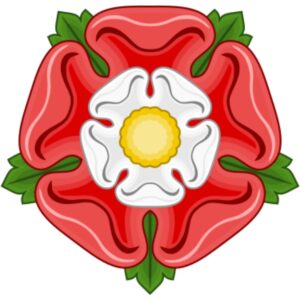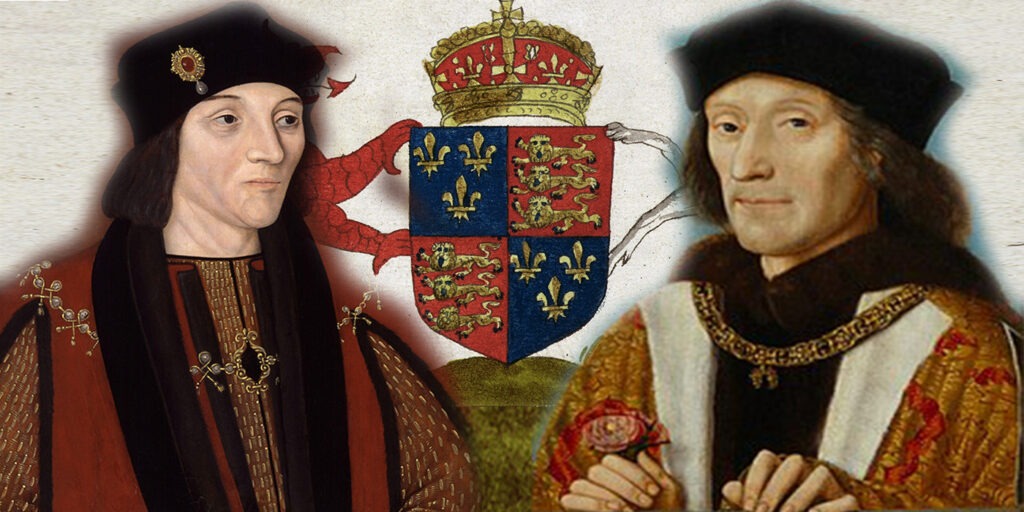King Henry VII is considered one of the greatest monarchs England has ever seen. Unfortunately, his life and deeds are often eclipsed by his rollicking and raunchy son; King Henry VIII, and his famed six wives. But, from the Wars of the Roses and Battle of Bosworth Field to his ascension as King and the political and financial changes he made; Henry VII greatly impacted British history. Without the foundations laid in his reign, many things would be different today.
Let’s take a look at some interesting facts about Henry VII.
7. Who Was Henry Tudor? His Birth & Start in Life

Before he was Henry VII the first king of his line, he was simply Henry Tudor. Of Welsh blood, born in Pembroke Castle on 28th January 1457, Henry VII was the son of Edmund Tudor and Margaret Beaufort. He was descended from Welsh legend Owain Tudur, with Owen Tudor becoming the anglicized version of the Welsh name.
Although he spent his early years in Wales, Henry and his uncle, Jasper Tudor, later fled to Brittany in 1471. The Wars of the Roses was getting worse and Henry’s line, the Lancasters, and the Yorks, who controlled the throne, were on fairly shaky terms. If they were in a relationship, they’d be a couple who divorced but awkwardly still lived together.
And so, Henry Tudor spent his formative years in Brittany’s royal court, learning what was needed to run a country. In many ways he was more familiar and adept at French court than the English, but the skills he learned there were invaluable for his future role as King of England.
6. Margaret Beaufort, Kingmaker & Mother of Henry VII

Henry Tudor would never know his father. Edmund Tudor died in Yorkist captivity before Henry was even born and his mother, Margaret Beaufort was just 13 at the time and already on her second marriage. Her first, incredibly, happened when she was between 1 and 3 years of age and was annulled by the time she was 7.
Margaret Beaufort was definitely a badass woman who changed history. Growing up in court and forced to endure so much at a young age, she had a strong, clever political mind. It was through her maneuvering that Henry Tudor ended up with the potential to sit on the throne at all.
Historians agree she was involved in the earlier unsuccessful Buckingham’s rebellion in 1483. It also seems she married her fourth husband Lord Thomas Stanley to further Henry’s cause. In doing so, she could return to the court of King Edward IV and raise support for Henry VII in England.
It’s undeniable that Margaret Beaufort was a key figure in Henry Tudor’s rise to power. Working the chess pieces in English court she gave him a position of power and influence before he even set foot on British soil. She also played a heavy hand in his rule, at least certainly in the early years of his reign; often traveling with the royal couple to offer advice and political savvy.
5. When Did the War of the Roses Start & How Old Was Henry Tudor?

The Wars of the Roses, a conflict between the Yorks and the Lancasters, commenced in 1455, two years prior to Henry Tudor’s birth, making him -2 years old at the start of the war. The Yorks controlled the throne but Henry’s lineage, the Lancasters, had a strong claim and the two houses had competed for 30 years before Henry Tudor and King Richard III met at the Battle of Bosworth Field.
4. Who Won The Wars of the Roses & The Battle of Bosworth Field

Henry VII didn’t win the Wars of the Roses and the Battle of Bosworth Field alone. In fact, he might not have won it at all if it weren’t for a last minute decision on allegiance by his own stepfather Lord Thomas Stanley.
After landing on Welsh shores in 1485, Henry traveled across the country gaining support and followers for his army, before making the trek to Bosworth Field. At least that’s what we believed. New evidence in 2009 uncovered the real site of the battle was actually two miles from the accepted location of the Battle of Bosworth Field near Ambion Hill.
At first, King Richard III had the advantage over Henry Tudor’s troops, with both experience and numbers on his side.
But his stepfather, Lord Thomas Stanley, and his stepfather’s brother, Sir William Stanley, were waiting in the wings. At first unwilling to pledge loyalty to either side, the Stanleys let Henry pass through Wales unencumbered, but also without aid. Watching the battle from nearby, their eventual decision to support Henry was a small decision that changed the history of England.
Finally, it was clear who won the Wars of the Roses as the Lancasters took the English throne, ending the fighting between the two families for good.
3. Henry VII & Elizabeth of York’s Marriage

Henry VII was a smart cookie. He knew the way to secure his and his son’s places on the throne of England; and how to end the Wars of the Roses for good. The answer was simple: he just needed to marry a Yorkist. And so, he became betrothed to a daughter of King Edward IV, Elizabeth of York.
The marriage was of course, purely political, and in fact, Henry announced his intention to marry her and bring the two lines together before he even set foot back in England to challenge her infamous uncle, King Richard III. When they married, Henry VII created a new symbol to go with a new dynasty – the Tudor Rose; the combination of the red rose of the Tudor line and the white rose of the Yorks’. It’s very convenient they both used flowers, or his job would have been a lot harder.
Despite the beginnings being for political reasons, Henry VII biographers and contemporaries at the time observed a genuine affection and love that grew between the couple. Unlike many royal marriages, it appeared that Henry Tudor and Elizabeth of York did actually love each other, and he was reportedly inconsolable when she died before him in 1503.

They had eight children together, 4 dying in infancy and childhood, while 4 survived, although unfortunately the Tudor’s oldest son, Arthur, did not live past 15. The other three, Henry, Margaret, and Mary spread the Tudor dynasty across France, Scotland, and England, with Margaret becoming Queen of France, Mary of Scotland, and Henry of course becoming the renowned and raunchy Henry VIII of England.
Sadly, Elizabeth of York died herself from post-partum complications after giving birth to their final daughter, Katherine who also died a few days later. Henry VII was devastated over Elizabeth of York’s death and shut himself away for days, only allowing his mother, Margaret Beaufort, near him in his sorrow.
2. How Did Henry VII Die? The End of a King, But Start of a Dynasty

Reportedly, Henry VII never got over the death of his wife Elizabeth of York. For the period, it was extremely unusual for a king to not remarry – particularly one who, after their eldest son Prince Arthur Tudor died, only had one surviving male heir to the throne, his namesake, Henry. But despite several considerations of marriage, he never managed to take the final step and tie the knot.
It was only 6 years after Elizabeth of York’s death that he himself fell ill with tuberculosis. Henry VII died on 21 April 1509 at Richmond Palace in Surrey. His body was interred next to Elizabeth’s and their effigies can still be seen today at Westminster Abbey.
1. Henry VII’s Legacy

Henry Tudor of course became Henry VII, the start of arguably the greatest dynasty England has ever known: The Tudors. Through his lineage, the country saw the reign of Henry VIII, Edward VI, Mary I, and Elizabeth I, one of history’s greatest queens.
King Henry VII has gone down in history as one of the better kings of England. He was reportedly kind and generous with his family. But he also had a keen financial eye and managed the affairs of the crown closely, creating the strongest treasury the country had seen in some time thanks to the Wars of the Roses.
He also was the first to use the red Welsh dragon of Cadwaladr on his coat of arms, setting it on its path to becoming part of the best flag in the world; the Welsh flag.
Let’s face it, what other country has a freaking dragon on their flag?!
Further reading:
https://www.rmg.co.uk/stories/topics/henry-vii-where-was-he-born-how-did-he-die
https://biography.wales/article/s-HENR-KIN-1457
